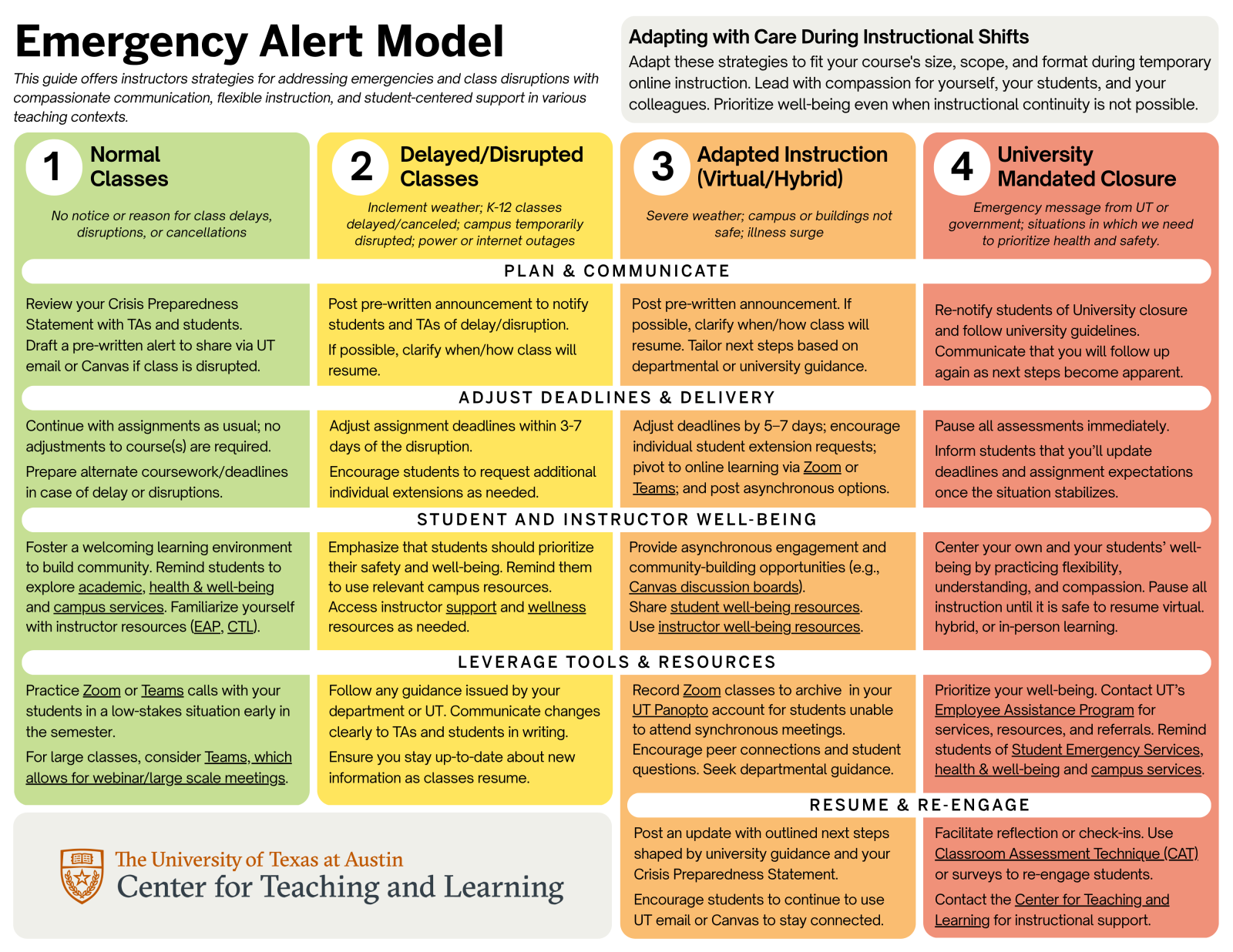
Disruptions can and do often happen throughout the year, impacting how and in what way we can continue instruction in our classes.
Consider adapting these suggested strategies to your pedagogical approach as it relates to your course’s size, scope, and format, regardless of the duration of temporary online instruction. Whether you pivot proactively or reactively in response to an emergency situation, make sure you practice self-compassion and compassion for your students, teaching team, and colleagues. Trust your judgment to prioritize safety, well-being, and community whether or not instructional continuity is feasible.
As you consider these situations, you may begin helping you and your students by folding preparedness into your courses from the very beginning.

| PlanBefore the semester begins, plan for unexpected disruptions to instruction by drafting a Crisis Preparedness Statement for your syllabus [which may be some version of the template provided via this link and/or at the bottom of this webpage] and an unpublished draft of a Canvas Announcement that you can quickly post if an emergency occurs [which may be some version of the template provided via this link and at the bottom of this webpage]. Use enabling and clarifying language. |

| PrepareAt the beginning of the semester, review your Crisis Preparedness Statement individually, with Graduate Teaching Assistants (TAs) in your first team meeting, and with students on the first day of class. Ensure that TAs and students are clear on planned steps or pivots. Address questions that arise and, if necessary, revise the statement to enhance clarity. Identify at least (2) students who are willing to post the statement in any student-led communications channels, and share updates during the semester in these channels if pivots are necessary. If you are working with TAs, identify at least (2) TAs who would be willing to support you in posting to Canvas when an instructional pivot is necessary. |

| PracticeThroughout the semester, periodically review your Crisis Preparedness Statement with your TAs and students. Clarify any questions that may arise. If you receive advance notice of a forthcoming disruption to instructional continuity, begin to implement your plan and communicate next steps clearly to students. Ensure that you are comfortable communicating through and instructing through Canvas. Log in to both Zoom or Teams at least once a month to update the software and remain prepared for modality pivots. Encourage your TAs and students to do the same. You may post periodic reminders on Canvas or mention it in class and in teaching team meetings. |
>> Identifying the Emergency: Depending on the nature of the emergency, the following recommendations should help guide you in making appropriate decisions. Click on the image below to open and download the alert model.

>> Communication: During emergency situations, communicating with your students will be vital. Please consider adopting one of our templates (below) as appropriate. You may download an editable Word document that contains these templates. Click on the image below to open the template suggestions.

Additional Resources and Guides: Instructors
Additional Resources and Guides: Students
Community/Campus Support and Emergency Resources
- Campus Emergency Information (Security and Emergency Management)
- Active Emergency Information Hub (The City of Austin)
- Employee Assistance Program
- Student Outreach and Support [SoS] (Dean of Students)
- Behavioral Concerns Hotline [BCAL] (Dean of Students, Counseling and Mental Health Center, HealthPoint Wellness, UT Police))

